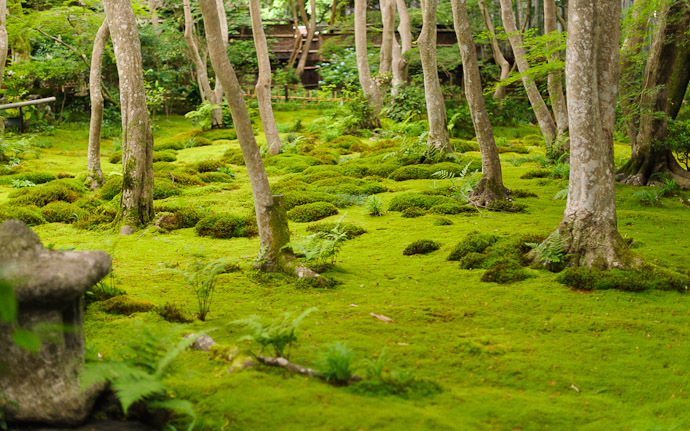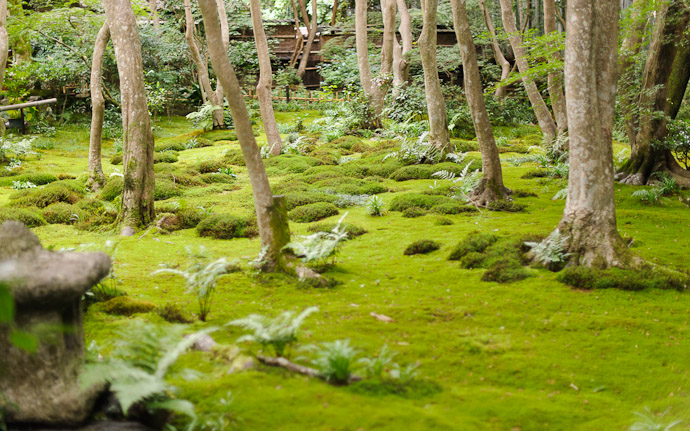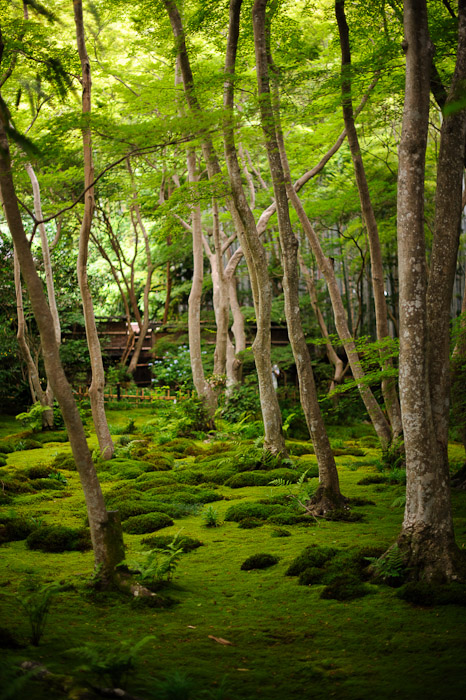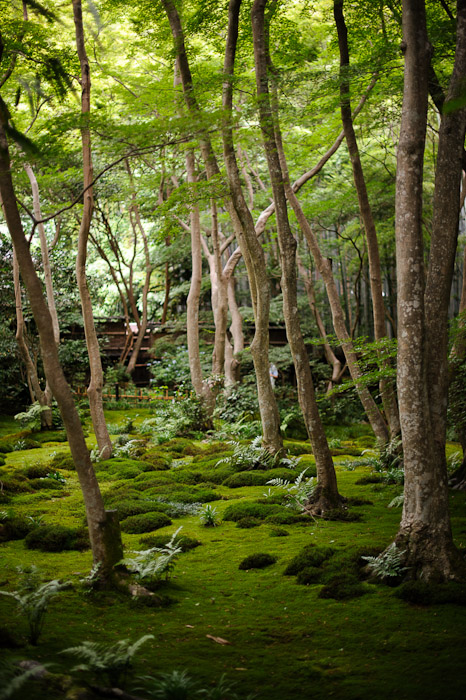This post shows some example effects of a polarizer filter on vegetation, specifically, the moss and fern laden garden of the Gioji Temple in Kyoto, Japan (祇王寺). On the topic of polarizers it follows from “A Few Polarization-Filter Examples” where I first brought up the topic four years ago, and the fall-foliage followup last year: “Heading Out To Photograph The Fall Foliage? Don’t Forget The Polarizer Filter”.
On the topic if the Gioji Temple, this post follows from yesterday's “Gioji Temple Photo Shoot: Nicolas's White Little Mushrooms” and the slightly earlier “Tag Along With Me on a Photo Shoot at Kyoto's Gioji Temple”.
Here's a pair of shots of Gioji's garden, with and without polarizer:
mouseover a button to see that image
As in my previous posts on polarizers, the “without polarizer” really means “with polarizer set for least effect”. I'm taking these without a tripod, so snap a picture and quickly turn the filter 90° and snap another. I should use a tripod, but I'm generally too lazy (but in the case of this temple, tripods are not allowed, so I have a good excuse. This time.)
Like a pair of good sun glasses, the polarizer cuts the reflected light from the leaves of the ferns. In person it's a stark, highly-impactful change for the better, making everything look deeper and richer. In the resulting photo, the difference is apparent but I'm not quite sure whether it's so clearly better. Perhaps it's a matter of taste.
Here's another set of examples:
mouseover a button to see that image
So, in this case, which do you prefer?




All depends on the effect you want to achieve. In the first picture, WITH is better, in the second WITHOUT looks livelier to me. I find that very often I don’t use a polariser, except in the case of water reflections I want to suppress. The effect on greenery is that the pictures start to look uniformly green, which it wasn’t when you looked at it yourself…
Good demo. I think the best images might be somewhere between the extremes
I think you’re right. I made some tests where I tried various settings between the extremes, but I can’t remember which images those were, so I’ll have to keep better notes next time. —Jeffrey
With.
I should use my polarizer more….
Interesting comparison. I haven’t been using a polarizing filter for a while, but instead have applied that effect in post. I think I’ll add a filter to my kit and try it out in the field.
You can’t really do it in post. The richness that comes from using it comes from compressing the dynamic range due to the lack of reflected brightness. When you have something more or less blown out by the direct reflection of the sky, how can you go back in post and put the underlying color (whatever it was)? If you had underexposed the reflections you might have a chance, but then the rest of the shot is severely underexposed, which makes its own problems. —Jeffrey
I prefer the shots with the polarizer. But I’m curious, are these straight out of the camera in all cases? While the removal of the glare on the ferns is the most apparent effect, the lighting and tones of the tree trunks as well as the richness of the green in the grass stood out to me as well. Since I’m not very experienced with polarizers, I’m just curious as to whether that’s the polarizer at work, or if you did some processing to the polarized photos that wasn’t applied to (or that wasn’t optimized for) the photos without the polarizer.
Each pair is treated the same in Lightroom, though I had to rotate one of each pair a touch to get it to match up with the other, because I did it handheld. The extra richness is a side effect of removing the glare… the camera doesn’t have to try to find an exposure that keeps the glare in mind, so it can concentrate on the true dynamic range of the scene. It’s often this side effect that’s the most important reason to use the filter. —Jeffrey